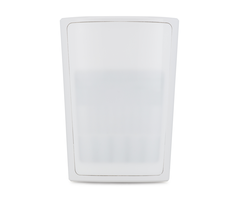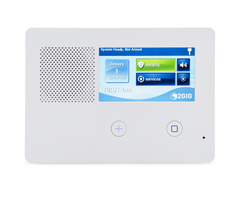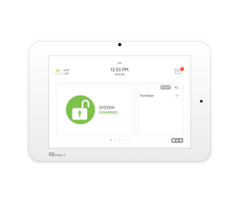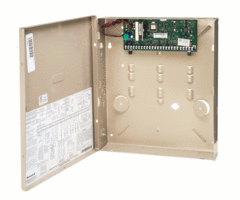Alarm Grid Video Recap: March 9th - 13th
Posted By Michael GorisWe're back with a new video recap! We apologize that we were unable to post this recap yesterday. Since our Florida office has been closed, we won't be able to shoot new videos until it reopens. But we are working to resume business as usual as soon as possible. For now, let's check out our newest videos!
Adding a Wireless Zone to a Qolsys IQ Panel 2
Jorge shows you how to add a new zone to a Qolsys IQ Panel 2 Security System. The process is the same, regardless of which version of the IQ Panel 2 or IQ Panel 2 Plus System you are using. You need to put the system in its auto-enrollment mode and then fault the sensor you are adding to transmit a signal to the panel. The system should then receive the signal and allow you to add the sensor to the system and configure the settings for that zone.
Adding a 2GIG GB1 to the 2GIG GC3
Your friend Jarrett shows you how to add a 2GIG GB1 Glass Break Detector to a 2GIG GC3 Security System. The 2GIG GB1 is a glass break detector that transmits signals at 345 MHz. The device actively listens for glass break events. It must hear both the low-pitched "thud" of an object striking against the glass and the high-pitched "shattering" of the glass breaking in order to activate. This dual-detection method helps prevent false alarms on the system.
Using a 5853 Glass Break Detector with a 2GIG GC3
Jarrett explains how you can use a Honeywell 5853 Glass Break Sensor with a 2GIG GC3 Alarm System. The Honeywell 5853 is part of the Honeywell 5800 Sensor lineup, and it transmits signals at a wireless frequency of 345 MHz. The sensor can be conveniently auto-enrolled with the GC3 System by putting the panel into its auto-enrollment mode and then activating the tamper cover for the sensor. You will need to adjust the Loop Number for the sensor when programming.
Using WIFI as Primary and GSM as Backup On My Qolsys IQ Panel 2
Jorge explains how the Qolsys IQ Panel 2 Plus System uses both cellular and IP connectivity to communicate with the Alarm.com servers. Alarm.com requires that any system connected with its servers has a cellular communicator installed and registered. The IQ Panel 2 System has both an LTE cellular communicator and a WIFI card built inside. Most users will set up the system to communicate across both pathways for optimal performance and reliability. This will require a monitoring plan that includes cellular connectivity.
Adding a Remote Keypad to the Qolsys IQ Panel 2
Jorge covers the process for adding a Qolsys IQ Remote Keypad to a Qolsys IQ Panel 2 Security System. In order for the pairing to work, the IQ Remote Keypad and the IQ Panel 2 System should be connected with the same WIFI network. If no WIFI is available, then the system and keypad can connect using a wireless access point (AP). Once you have completed the pairing process, you should test the IQ Remote by arming and disarming the system to ensure that it is working properly.
Using the Chime feature On a Qolsys IQ Panel 2
Jorge explains how chimes work on a Qolsys IQ Panel 2 Security System. A chime is a quick sound the system makes when a connected sensor is faulted or activated. They are useful for quickly letting you know about system events. You can set up individual chimes for each zone on the system. However, no chimes will be produced if system-wide chimes are disabled. If there is a zone for which you don't want any chime sounds to occur, then you can set its chime setting to None.
Using 2GIG Sensors On a Qolsys IQ Panel 2
Jarrett explains how you can use 2GIG Sensors with the 345 MHz version of the Qolsys IQ Panel 2 Plus. Any sensor you want to use with the system will first need to be enrolled. We recommend auto-enrolling, as this ensures that the sensor can communicate with the panel successfully. Any uni-directional 2GIG 345 MHz Sensor can be used with the 345 MHz IQ Panel 2 Plus. Please note that this does not include the 2GIG eSeries Encrypted Sensors, which are for the 2GIG GC2e and 2GIG GC3e only.

 Installing
Installing  We would like to apologize for any issues that this may have caused, and we expect all Total Connect 2.0 services to work as normal. If you are still experiencing issues, we recommend emailing our support team at
We would like to apologize for any issues that this may have caused, and we expect all Total Connect 2.0 services to work as normal. If you are still experiencing issues, we recommend emailing our support team at 



 Alarm Grid has previously offered the
Alarm Grid has previously offered the 













